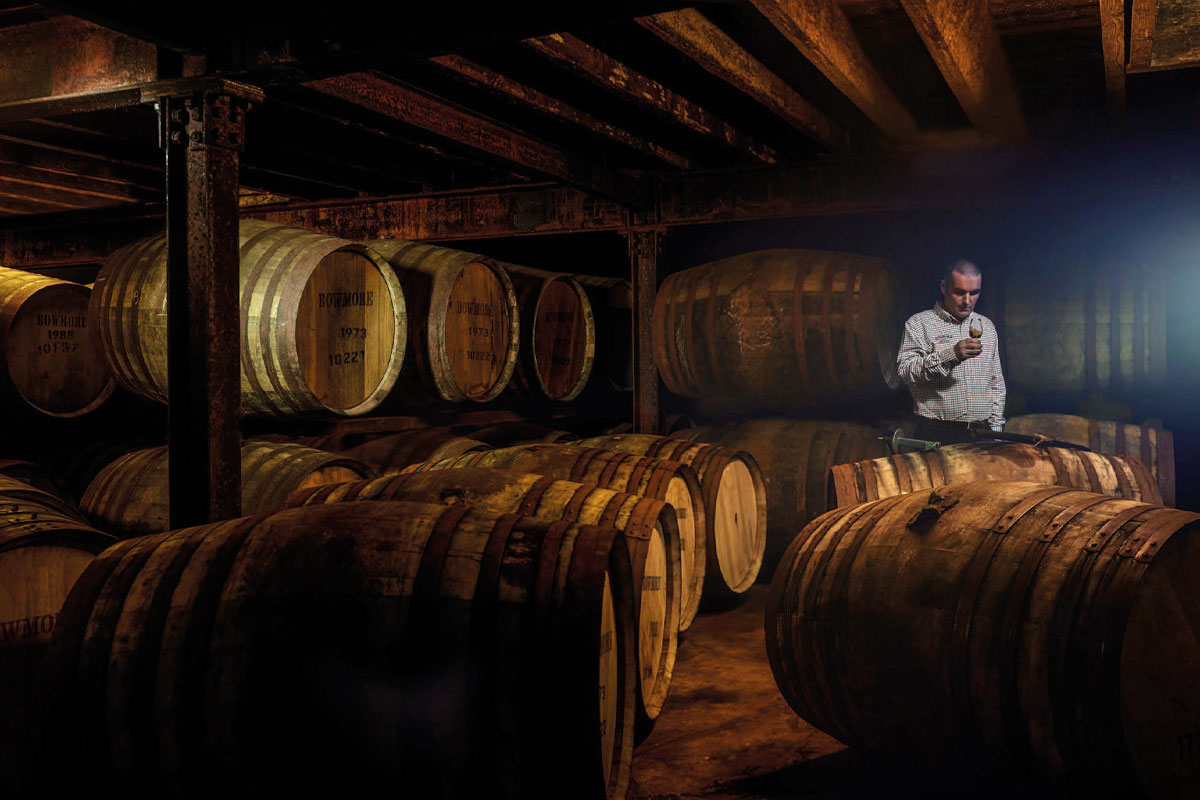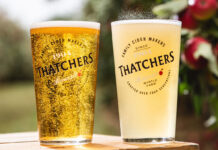Times have changed but the commitment to quality continues at Bowmore Distillery

IT could be said that David Turner has Bowmore in his blood.
Turner, who oversees production at Islay’s oldest distillery, joined Bowmore straight from school in 1990.
Fresh-faced as he was, he already had links to the industry, and to Bowmore in particular: his grandfather had worked in the malt barns there in the 1950s and ’60s and a relative was the distillery manager when he joined.
Cutting his teeth in the warehouses and malt barns, Turner then moved into the production side of the whisky-making process, first in mashing and then distillation. He became head distiller in 2007 and then distillery manager in 2012.
It’s been a transformative three decades for the industry as well as for the distillery itself, which has gone from family ownership in 1990 to part of the multi-national Beam Suntory portfolio today.
Speaking to SLTN last month, Turner said the environment has become a far bigger consideration in the production process as Bowmore, Beam Suntory and the wider whisky industry look to be more sustainable.
“We have (key performance indicators) on a monthly basis,” he said.
“We look at our water usage, our energy usage per litre of alcohol.
“We’re doing some peat restoration, water sanctuary restoration.
“It’s important to look after the environment and use as little water and energy as possible.”
The market itself has changed too.
When Turner joined Bowmore in 1990 the distillery was still producing a lot of spirit for blending. Since then, he has witnessed the focus shift exclusively to single malts as demand has grown around the world.
The Bowmore core range now encompasses the distillery’s 12 year old, 15 year old, 18 year old and 25 year old expressions, with Turner saying the flavour of the whisky evolves as you move through the bottlings.
“We peat all our whiskies at the same level, but in the younger expressions the peat is more dominant,” he said.
“It goes from ripe fruits at 12 years to, at 18 years old, the ripe fruits turning to tropical fruits.
“And as the fruit gets more tropical the peat smoke dies down or camouflages into the background.
“So if you’re looking for something with a wee bit more peat in it you’ll start at the 12, if you’re looking for something at 18 to 25 you’re looking for more the ripe tropical fruits with the distinctive Bowmore smokiness in the background.
“Our core range is a good example of how Bowmore changes from the 12 year old to the 25 year old. How it evolves over time.”
Whisky fans have evolved over time, too.
“People who [visit the distillery] have got a lot of knowledge now,” said Turner.
“People did back then as well, but maybe in fewer numbers.”
The growing interest in single malt has also led to an increase in whisky tourism as fans flock from all over the world to visit their favourite distilleries.
Turner said that, when he started at Bowmore, the distillery employed a visitor centre manager and a couple of other staff who worked on a seasonal basis.
“But now, all year-round, we’ve got probably ten or 11 staff in here,” he said.
“There’s quieter spells, like December or January, but there’s always somebody about.
“The tourist side has changed massively.”
One element of the business that hasn’t changed is the commitment to producing and maturing quality spirit, and Turner said one of his proudest moments in the job was the release of the 50 year old Black Bowmore in 2016.
“My grandpa would’ve been one of the guys who laid that cask down to rest,” he said.
“And I was the manager when it got released at fifty years old.
“I‘m proud that we’ve got good, aged stocks and we have to thank the past generation for their insight in laying that stock and keeping it to age.”
And now Turner heads the team laying the stock down for future generations to bottle and sell.
It’s clearly a responsibility he takes seriously.
“We see ourselves as caretakers,” he said.
“We’re selling what the last generation made, and it’s good quality stuff.
“We hope we’re also making good quality stuff and passing on our knowledge to the younger team to keep the tradition going for the next generation.”
With discerning customers around the world turning to single malt, Turner reckons the future will be bright for Bowmore – as well as for the wider Scotch whisky industry.
He said: “So many different countries around the world are appreciating single malts now and I think we’ll see more and more people – and more younger people – drinking and appreciating our whiskies.
“I think the future looks fantastic.”

























